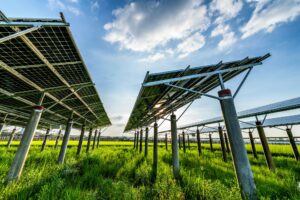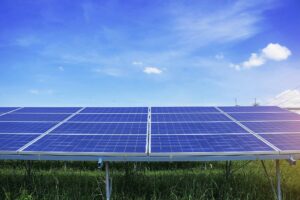The transition to renewable energy is vital for combating climate change, reducing pollution, and ensuring a sustainable future. Integrating solar energy with other promising renewable sources, such as wind, hydro, and biomass, presents a comprehensive approach to achieving energy independence and enhancing grid reliability.
Let’s explore the benefits, challenges, and methods of integrating solar energy with other renewable energies.
Integrating solar energy with other renewable energy sources offers numerous advantages. This approach not only enhances the reliability and efficiency of the power supply but also contributes to cost savings and environmental sustainability.
Some key benefits of integration include:
Solar energy is intermittent, with power generation dependent on sunlight availability. By integrating solar with wind, hydro, and biomass energy, the overall reliability of the power supply increases.

Different renewable sources can be optimized to work together, improving overall energy efficiency.
For instance, during periods of excess solar power production, surplus energy can be used to pump water into hydroelectric reservoirs. This stored potential energy can later be converted back into electricity during low solar production periods.
Integrating various renewable energies can lead to significant cost savings by reducing the need for fossil fuel-based power plants. The complementary nature of different renewables means that less backup capacity is required, lowering operational and maintenance costs.
Combining multiple renewable sources minimizes environmental impact by reducing reliance on fossil fuels and lowering greenhouse gas emissions.
Pro Tip: Exponential advancements in solar battery storage have opened doors to increased energy efficiency and sustainability.
For more info on the benefits of solar battery storage, read our article: The Benefits of Solar Battery Storage
There are several effective ways to integrate solar energy with other renewable energy sources. These methods include hybrid power systems, microgrids, energy storage solutions, and smart grid technologies.
Hybrid systems combine two or more renewable energy sources to provide a more consistent power supply.
Solar microgrids are localized energy systems that can operate independently or in conjunction with the main grid. By integrating solar panels with other renewable sources like wind turbines and battery storage, microgrids can provide a reliable and sustainable power supply for communities and remote areas.

Energy storage technologies, such as batteries and pumped hydro storage, play a crucial role in integrating solar energy with other renewables. These systems store excess energy produced during peak production periods and release it when demand is high or production is low. This balance helps stabilize the grid and ensures a continuous power supply.
Smart grids use advanced communication and control technologies to optimize the integration of various renewable energy sources. These grids can monitor and manage energy production, distribution, and consumption in real-time, enhancing efficiency and reliability.
Pro Tip: Building-integrated photovoltaics (BIPV) is revolutionizing sustainable architecture and optimizing the energy production of new constructions.
Get more information on BIPV here: Building-Integrated Photovoltaics: The Future of Sustainable Architecture
Integrating solar energy with other renewable sources comes with its own set of challenges. Addressing these challenges requires upgrading grid infrastructure, supportive regulatory policies, and advanced technical solutions.
Integrating multiple renewable sources requires significant upgrades to the existing grid infrastructure. This includes modernizing transmission lines, substations, and distribution networks to handle variable power inputs.
Effective integration of renewable energies requires supportive policies and regulations. Governments should provide incentives for renewable energy projects, establish clear guidelines for grid interconnection, and promote research and development in renewable technologies.
Managing the integration of different renewable sources involves complex technical challenges. Advanced control systems, forecasting tools, and optimization algorithms are essential for efficient operation.
Integrating solar energy with other renewable sources offers a path toward a more sustainable, reliable, and efficient energy system. By leveraging the complementary strengths of various renewables, we can create a resilient energy infrastructure that reduces our dependence on fossil fuels and mitigates the impacts of climate change.
Through continued innovation, investment, and collaboration, the integration of solar energy with other renewables will play a crucial role in achieving a sustainable energy future. Contact Gurr Brothers Energy today and get started on your path to a brighter, greener future!
Author: Hunter S.
Give Gurr Brothers Energy a call today and let’s start powering your life with sunshine!